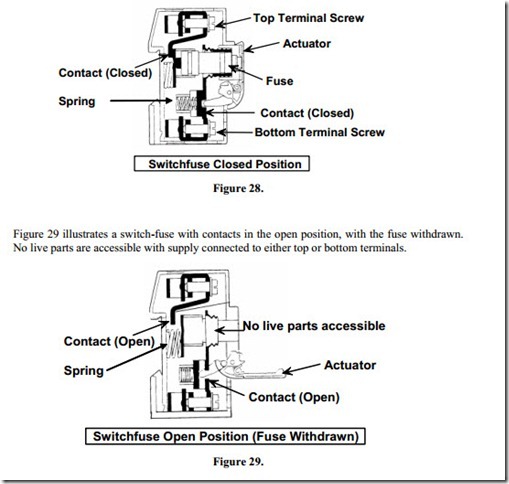The Switch-Fuse
The type of switch-fuse, used in domestic type distribution boards, must accomodate at least a 63A fuse. Normally this fuse is a neozed type. This switch-fuse is used to isolate the supply from the installation and also protects the distribution board itself from overloads and short circuits. The switch-fuse terminals can usually accommodate up to 35mm2 cable. A mechanical interlock prevents the closing of the switch until the fuse is firmly engaged in position. This provides a check against the possibility of the fuse being left loose, which could result in overheating, leading to a possible fire hazard. When the switch is off and the fuse withdrawn, it is not possible to touch any live parts. Some switch-fuses may have the supply connected to either the top or bottom terminal. Figure 28 illustrates one such switch-fuse with contacts in the closed position.
